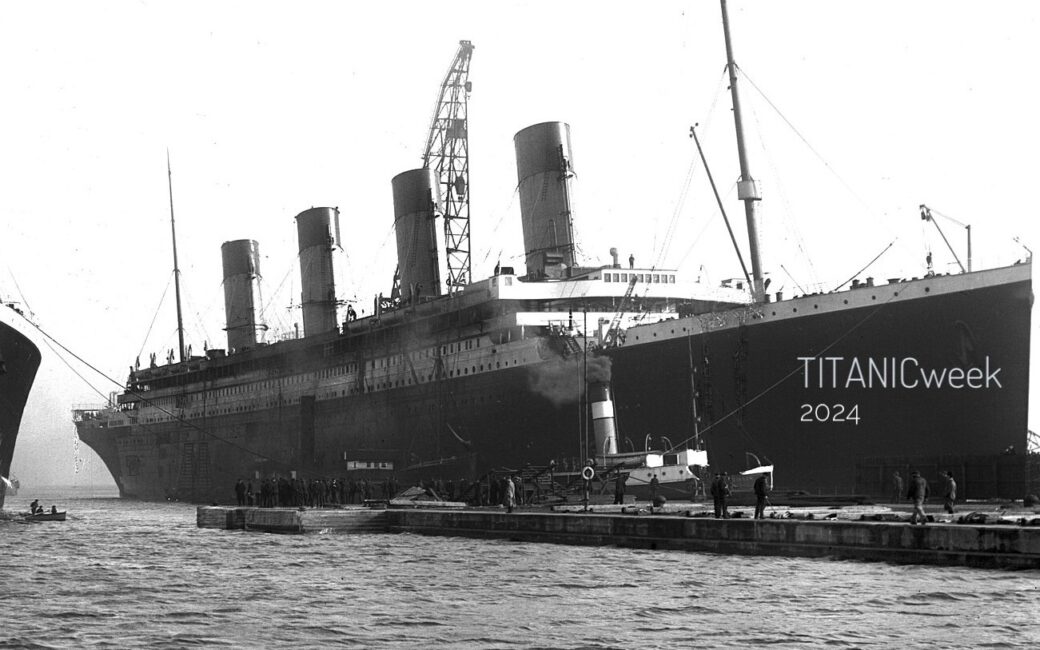"God Help Me, I Told a Lie": Kate Gilnagh
A week before Kate Gilnagh stepped aboard the R.M.S. Titanic, a fortune teller had called at her family's home in County Longford, Ireland.
According to Kate's relatives, her father Hughie was turning the woman away when 17-year-old Kate stepped forward, insisting that she would like her fortune told for a sixpence.
The fortune teller reportedly took Kate's palm and told the girl: she would soon cross water, and although there would be danger, that Kate herself would not come to harm.
Kate Gilnagh boarded Titanic in Queenstown, Ireland, as a steerage passenger on April 11, 1912. She was emigrating to America to join her sister Mollie in Manhattan.
Kate took to cabin 161 on E-Deck.
And by lucky chance, she found herself bunking with three other girls all also from County Longford: they were two other Kates, and a Margaret.
Over the course of the voyage, Kate Gilnagh seems to have become acquainted with more male passengers who came from Longford--this was hardly surprising to anyone, according to reports, due to her memorable beauty.
Kate also is reported to have socialized with Eugene Daly, a 29-year-old piper who is rumored to have caught her eye while on deck.
On the night of the collision, Kate recalled to Walter Lord that there was a lively party happening in the communal portion of steerage. She even detailed that a rat had, at one point, scurried through the mess of dancers, inciting short-lived chaos.
Eventually, Kate and her three bunkmates had retired to their cabin when a man with whom they had become acquainted, rattled the door.
According to Walter Lord, this was none other than Eugene Daly.
Kate Gilnagh and her cabin-mates attempted to make their way to the upper decks. But they were stopped en route.
According to Kate, an unidentified crewman blocked the way of the group in an attempt to keep the steerage passengers in order. And when she herself tried to pass through an unknown barrier, said crewman halted her in her path.
It was then that she reported her friend Jim Farrell shouldered his way through the crowd with ferocity.
"At another barrier a seaman held back Kathy Gilnagh, Kate Mullins and Kate Murphy... Suddenly steerage passanger Jim Farrell, a strapping Irishman from the girls' home county, barged up. 'Great God, man!' he roared. 'Open the gate and let the girls through!' It was a superb demonstration of sheer voice power. To the girls' astonishment the sailor meekly complied."
Excerpt from "A Night to Remember," by Walter Lord, page 57.
With Jim's help--and Kate later referred to him in an interview as their "guardian angel"--the group ascended the decks.
But somewhere along the line, Kate Gilnagh is reported to have gotten spun around and had gotten lost from her friends. She told Walter Lord that she quite suddenly found herself alone on the portside Second-class promenade with no apparent means to reach the boat deck above.
The deck, Kate said, was eerily devoid of people, aside from one man leaning on the railing and staring grimly out toward the blackened sea. Seeing her plight, he offered for her to stand on his shoulders so she might reach and climb up onto the deck above them.
Kate accepted.
Just as she hauled herself onto the boat deck, a nearby lifeboat--often reported as Lifeboat 16--was starting its descent. Kate attempted to board, but she was blocked yet again by a crewman telling her the boat was at capacity.
"But I want to go with my sister!" she spontaneously cried out.
On the fiftieth anniversary of the sinking, Kate Gilnagh told the following to the New York Daily News.
"God help me, I told a lie... at first they didn't want to let anyone else into it because it was overcrowded. I said that I wanted to go with my sister. I had no sister aboard. They let me get in, but I had to stand because we were so crowded."
Citation courtesy of "The Irish Aboard Titanic" by Senan Molony, 2000.
Jim Farrell had also made it to that same lifeboat, but he did not leave the deck.
According to a contemporary report from the Irish Post, on May 25, 1912, the pair had one final, somber interaction.
"[Kate Gilnagh] further states that she was wearing a small shawl on her head which got blown off, when a person named Mr James Farrell on Clonee, gave her his cap.
As they were being lowered, he shouted: 'Good-bye for ever' and that was the last she saw of him."
Citation courtesy of "The Irish Aboard Titanic" by Senan Molony, 2000.
When Kate arrived in New York City, she was listed as a domestic servant, aged 17 years, and destined for a relative's house on East 55th Street.
Her sister Mollie was reportedly "inconsolably arranging a Requiem Mass" for her sister's repose, when Kate walked into the room.
Fifty years later, Kate retold the story to the New York Daily News.
"My relatives thought I was dead and when I got to my sister's house they were preparing for my funeral."
Citation courtesy of "The Irish Aboard Titanic" by Senan Molony, 2000.
Mollie and Kate immediately arranged to take a portrait together.
They did so to reassure their family back in Ireland that Kate had somehow, by the grace of heaven, survived the sinking of the Titanic.
SOURCE MATERIAL
Lord, Walter. "A Night to Remember." St. Martin's Griffin, 2005 edition.
Molony, Senan. "The Irish Aboard Titanic." Wolfhound Press, 2000.
https://www.encyclopedia-titanica.org/titanic-survivor/katie-gilnagh.html





